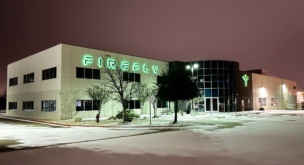Austin, TX—After spending three weeks in a highly elliptical Earth orbit, Firefly’s Blue Ghost lander is finally on its way to the Moon, having successfully completed its critical trans lunar injection burn on Saturday.
In the coming days, Firefly will perform a series of burns—including a four-minute main engine firing on its four-day journey to lunar orbit. Blue Ghost will then attempt its Moon landing at the beginning of March.
Payload recently visited the Blue Ghost mission control center outside of Austin to track the CLPS lander’s progress.
The long way to the Moon: Firefly opted for a circuitous, month-and-a-half-long journey to the Moon, which allowed onboard payloads to gather more data—and gave the company time to check systems before the main event.
“If we were going just straight to the Moon, we wouldn’t really have time to fix anything that was coming up,” Ray Allensworth, Firefly’s spacecraft program director, told Payload.
Breaking in a new horse: The first hold-your-breath moment of Blue Ghost’s maiden mission, which launched Jan. 15, was firing up the spacecraft’s engines on their first burn.
- The burn and subsequent checks were right on target.
- Likewise, the second engine burn was successful enough to forgo a planned third clean-up burn.
The company said the most significant challenges thus far have been getting used to ground station comms, powering up all ten payloads on board, and getting comfortable with upper and lower subsystem alarms.
After Firefly initiates Blue Ghost’s descent to the lunar surface, it will turn over all subsequent decision-making to its vision navigation systems.
The landing sequence:
- The software, pre-programmed with publicly available images of the lunar surface, will scan the surface to determine a safe landing area.
- Once near the surface, Blue Ghost will initiate its main engine braking burn before cutting off and landing with just its eight thrusters.
- To mitigate horizontal skipping, Firefly installed an eight- to ten-inch stack of aluminum honeycomb in its landing legs to help with leveling upon touch down on the rocky lunar surface.
“The US hasn’t had a fully successful lunar mission since Apollo. To be able to do that from a commercial standpoint would be really important,” said Allensworth.
Correction: The article has been revised to correctly characterize the burn as trans lunar injection, not lunar insertion.



